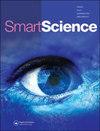软计算技术在染料敏化太阳能电池孔隙率优化中的应用
IF 1.4
Q2 MULTIDISCIPLINARY SCIENCES
引用次数: 0
摘要
摘要本文介绍了基于进化计算的染料敏化太阳能电池孔隙率优化技术,并进行了比较分析。基于扩散微分方程的DSSC模型达到了目的。孔隙率已被考虑用于优化,因为它影响光吸收和电子扩散速率。由于这个原因,不同孔隙率的电池性能不同。该参数通过适当的调整可以帮助提取最大效率,而与环境因素无关。将人工蜂群、差分进化、遗传算法、粒子群优化和模拟退火等搜索和优化工具应用于DSSC模型进行优化。对经典的优化算法进行了比较,并对不同厚度的二氧化钛层进行了研究。本研究结果表明,在收敛性和计算时间方面实现了最佳方法,并在不同孔隙率下检查了优化孔隙率的一致性。它方便了DSSC的实际模型改进,具有更好的效率。图形摘要本文章由计算机程序翻译,如有差异,请以英文原文为准。
Application of Soft Computing Techniques for Porosity Optimization of Dye Sensitized Solar Cell
ABSTRACT In this paper, the evolutionary computation-based techniques have been introduced for porosity optimization of dye-sensitized solar cell (DSSC) with comparative analysis. The diffusion differential equation-based model of DSSC achieves the goal. The porosity has been considered for optimization as it influences the light absorption and electron diffusion rate. Due to that reason, the cell performance differs at different porosities. This parameter with proper tuning can help to extract the maximum efficiency irrespective of environmental factors. The search and optimization tools, such as artificial bee colony, differential evolution, genetic algorithm, particle swarm optimization, and simulated annealing (SA), is used and applied to the DSSC model for the optimization. The classic optimization algorithms have been compared, and an investigation has been carried out at different thickness values of the titanium dioxide ( ) layer. This study results the realization of the best approach in terms of convergence and computational time, and the consistency of the optimized porosity has been examined at distinct porosity. It is convenient for the practical model improvement of DSSCs with better efficiency. Graphical abstract
求助全文
通过发布文献求助,成功后即可免费获取论文全文。
去求助
来源期刊

Smart Science
Engineering-Engineering (all)
CiteScore
4.70
自引率
4.30%
发文量
21
期刊介绍:
Smart Science (ISSN 2308-0477) is an international, peer-reviewed journal that publishes significant original scientific researches, and reviews and analyses of current research and science policy. We welcome submissions of high quality papers from all fields of science and from any source. Articles of an interdisciplinary nature are particularly welcomed. Smart Science aims to be among the top multidisciplinary journals covering a broad spectrum of smart topics in the fields of materials science, chemistry, physics, engineering, medicine, and biology. Smart Science is currently focusing on the topics of Smart Manufacturing (CPS, IoT and AI) for Industry 4.0, Smart Energy and Smart Chemistry and Materials. Other specific research areas covered by the journal include, but are not limited to: 1. Smart Science in the Future 2. Smart Manufacturing: -Cyber-Physical System (CPS) -Internet of Things (IoT) and Internet of Brain (IoB) -Artificial Intelligence -Smart Computing -Smart Design/Machine -Smart Sensing -Smart Information and Networks 3. Smart Energy and Thermal/Fluidic Science 4. Smart Chemistry and Materials
 求助内容:
求助内容: 应助结果提醒方式:
应助结果提醒方式:


